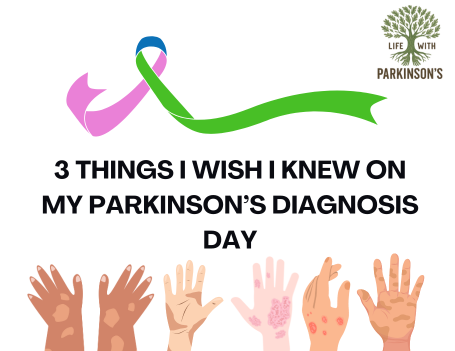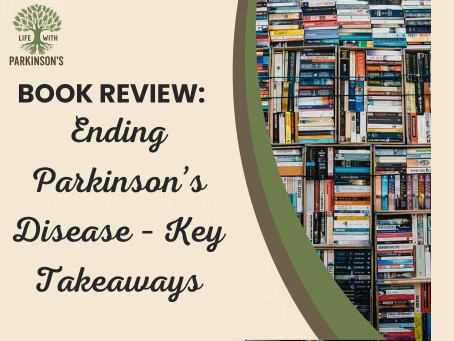Introduction
Sound can be profoundly healing. For people with Parkinson’s and their caregivers, creative therapies offer comfort and hope alongside medical treatments. Many have found that listening to music, feeling gentle vibrations, or using tuning forks can ease stress and even improve symptoms.
In fact, one person with Parkinson’s described how sound therapy helped: “I lie down every day and put on my headphones… I go into a very peaceful and restful sleep. Sound Therapy is beneficial to the stress that this malady brings on…”
Rhythmic Nature of Body and Sound
Our brains and bodies are deeply rhythmic. By tapping into sound – whether a favorite song, a steady beat, or the hum of a tuning fork – we can engage the nervous system in positive ways. Researchers have shown that music and rhythmic sound can actually help people with Parkinson’s move more smoothly.
For example, studies note that listening to or playing music “may be beneficial” for Parkinson’s, improving step length, timing, coordination, and balance. Similarly, vibroacoustic therapy (combining music with low-frequency vibration) has been shown to reduce body stiffness and tremors, and even lengthen stride in people with Parkinson’s disease. In short, gentle sound and vibration can help many motor symptoms of Parkinson’s.
Dopamine Loss and Sound Therapy’s Role
Parkinson’s disease arises when dopamine-producing brain cells (in the substantia nigra) die off or become impaired. This dopamine loss leads to motor issues like tremors, stiffness, and slow movements, as well as non-motor challenges like anxiety and sleep. While there is no cure, sound therapy offers a drug-free, non-invasive approach to complement standard care. By engaging the brain’s sensory and motor networks, sound-based methods can often motivate movement and lift mood.
In one review, scientists concluded that there is growing evidence supporting acoustic interventions (music, rhythmic cues, and vibrations) in Parkinson’s. They note that different symptoms respond to different sound-based approaches – for example, rhythmic beats can drive faster movement, while soothing sound vibrations can dampen involuntary shaking.
How Sound Affects Movement and Mood
Rhythmic Auditory Stimulation (RAS)
Music and sound influence the brain and body in many ways. Rhythmic auditory cues – like a metronome or drumbeat – help the brain time movements. This is called rhythmic auditory stimulation (RAS).
In Parkinson’s, RAS has been shown to improve gait: one study found that walking to a steady beat significantly increased stride length, walking speed, and overall coordination compared to walking without sound. In practical terms, tapping your foot or walking to music at a steady tempo helps the brain “entrain” your step timing. Over time, regular practice with rhythmic sounds can restore some internal timing mechanisms that Parkinson’s may disrupt. Caregivers often note that patients who listen to upbeat music or drum rhythm take bigger, more confident steps.
Binaural Beats and Gamma Stimulation
Beyond rhythm, the brain responds to specific frequencies of sound. For example, certain patterns called binaural beats or gamma-frequency stimulation are being explored in research. A recent clinical trial used a 35–40 Hz binaural beat (two tones played in each ear creating a 40 Hz interference) and found it reduced resting tremor in the more-affected limb of Parkinson’s.
This 40 Hz (gamma) range is thought to be “prokinetic” – in other words, it helps prompt movement – because it can synchronize motor networks in the brain. Although these approaches are still experimental, they suggest that even subtle sound patterns can influence the neural circuits of Parkinson’s.
Mood, Cortisol, and Relaxation
Importantly, sound also deeply affects mood and stress. Parkinson’s often brings anxiety, depression, and sleep disruption. Music has a well-established calming effect: researchers report that playing or listening to music reduces cortisol (the stress hormone) and boosts the immune system.
In one study, listening to music and engaging with sounds significantly lowered cortisol levels and increased beneficial immune cells in the body. In practice, many people with Parkinson’s find that music therapy makes them feel less anxious and more positive. When stress and worry go down, so can Parkinson’s symptoms. (Indeed, tremors often worsen under stress and disappear in deep sleep, so bringing the body into a relaxed state – through soft music or tuning fork vibrations – can literally break the tremor cycle.)
Tuning Fork Therapy: Gentle Healing Vibrations
What Is a Tuning Fork?
One specific form of sound therapy is tuning fork therapy. A tuning fork is a simple metal instrument – typically aluminum or steel – shaped like a two-pronged fork. When struck (for example, tapped on a rubber pad), it rings at a precise, pure frequency. In healing contexts, these vibrations are used to bring the body back into balance.
Tuning forks used for therapy are “precision-crafted… acoustic resonators” that create clear tones when struck. Though we hear the sound with our ears, the body also feels the vibration through the skin and deeper tissues. This is sometimes called vibrational medicine. The idea is that every part of the body has its own natural frequency, and external vibrations can help “tune” out of sync systems, encouraging a return to equilibrium.
How It’s Used
Tuning fork therapy is gentle and non-invasive. It often involves placing the vibrating fork on or near specific points of the body – for example, acupressure points, joints, or along the spine. Some practitioners follow Chinese meridians, Ayurvedic chakras, or trigger points, but even without that framework, any placement that feels good can be therapeutic.
In Canada and elsewhere, sound healers use tuning forks of various types: some target individual joints or endocrine glands (Body Tuners or Energy Field Harmonization forks), while others use weighted forks (like the Biosonics Otto Tuners) that give a stronger, longer vibration when placed against the body. (You might see terms like “fork tuner” or “tone fork” used interchangeably – these are just nicknames for the same tool, since a tuning fork was originally made for tuning instruments.)
Anyone can learn a basic tuning fork technique: strike the fork gently (with a rubber mallet or on your knee), hold the handle, and place the base of the fork on a body point. The sound will be heard and the vibration felt.
Effects on Body and Brain
According to sound therapy experts, tuning fork treatments work on many levels. On a physical level, the sound waves can stimulate mechanoreceptors (pressure sensors) in the skin and tissues, which helps increase circulation and activate healing processes. Research suggests that vibrations can even boost nitric oxide production in tissues – nitric oxide relaxes blood vessels (improving blood flow) and is linked to pain relief and cellular repair.
In fact, tuning forks have been shown to trigger nitric oxide release in bone and connective tissue, setting off a cascade of healing signals in the body.
On a neurological level, tuning forks often induce calm. The low-frequency tones encourage the brain to shift from a “fight or flight” state to a restful, parasympathetic state. In practical terms, many people report deep relaxation and reduced anxiety after a tuning fork session.
For example, Willowgrove Wellness describes how tuning forks activate the parasympathetic system – lowering heart rate, blood pressure, and muscle tension – for a profound sense of peace. This parasympathetic activation is crucial for Parkinson’s: when the body relaxes, tremors can subside and medication can work more effectively. At the same time, the positive vibrations can prompt the release of endorphins (the body’s natural painkillers), which may ease any muscle aches or rigidity. In summary, tuning fork therapy combines sound, vibration, and relaxation to help the body heal itself in a subtle yet powerful way.
Benefits of Sound and Tuning Fork Therapy for Parkinson’s
Improved Movement and Gait
Caregivers and individuals living with Parkinson’s report a range of benefits from incorporating sound therapy – especially tuning forks – into their routines. Many of these align with what research is starting to confirm:
Improved Movement and Gait: Rhythmic cues (like music beats) have been clinically shown to improve walking. In practice, people walk with longer strides, better timing, and steadier balance when following a beat. Vibroacoustic interventions (sound + vibration) also enhance movement: one trial found that music combined with 40–55 Hz vibrations significantly improved mobility and reduced muscle tension in disabled patients, compared to music alone. In Parkinson’s specifically, sound-assisted therapy has led to greater gait speed and stride length.
Reduced Tremors and Rigidity
Perhaps surprisingly, even chronic tremors can lessen under sound therapy. Vibroacoustic studies note that patients experienced reduced tremor intensity when exposed to low-frequency vibrations. One theory is that the gentle shaking of tissue “masks” the internal tremor feedback, effectively lowering the brain’s tremor rhythm. Also, by inducing deep relaxation, tuning forks and soothing sounds break the stress-tension cycle that often spikes tremors.
For example, research suggests that delivering vibrations to muscles or whole body (via a vibrating chair) “has demonstrated some level of efficacy in reducing tremors in individuals with PD,” likely by relaxing the muscles and shifting neural oscillations. Anecdotally, people report steadier hands and limbs during and after sound sessions.
Enhanced Mood and Emotional Well-Being
Music and sound have a universal uplifting quality. Studies show music therapy can improve mood, motivation, and mental outlook in Parkinson’s patients. Listening to or creating music triggers reward centers in the brain and releases dopamine, serotonin and endorphins – key chemicals that are often out of balance in Parkinson’s.
By lowering stress hormones (as one study found, listening to music reduces cortisol) and providing an enjoyable focus, sound therapy can ease anxiety and depression. Many find that singing, drumming, or simply gentle tuning fork tones help them “live in the moment” and feel more connected to life’s joy – which is powerful medicine.
Pain Relief and Relaxation
Parkinson’s can come with chronic pain from muscle cramps or rigidity. The vibrations and relaxation from tuning forks can alleviate this. Sound therapy sessions stimulate mechanoreceptors and increase circulation, which helps relax tight muscles and reduce inflammation.
As Willowgrove Wellness notes, tuning fork vibrations encourage endorphin release, the body’s natural painkillers. Caregivers often observe that after a tuning fork session, a loved one’s body feels softer and less achy.
Cognitive and Sleep Support
While mainly focused on motor symptoms, sound therapy can also benefit thinking and rest. The alpha/theta brainwave shifts induced by soft sound help quiet the mind, improving focus and memory. Some research even suggests that targeted sound frequencies can “entrain” the brain toward healthy rhythms.
Moreover, many Parkinson’s patients struggle with insomnia. In practice, people find that using tuning forks or calming music at bedtime helps them drift off easier. One testimonial mentioned before highlights using sound to achieve a “peaceful and restful sleep”.
Bringing Sound Therapy Home (and Finding Help in Canada)
Getting Started
For caregivers and individuals interested in trying this approach, there are simple ways to begin. You don’t need fancy equipment to start exploring: even your voice, a smartphone app with beats, or a basic tuning fork kit can make a difference.If you’re looking for a high-quality starter kit,SomaEnergetics offers therapeutic tuning forks and training tools used worldwide for vibrational healing.
If you have a tuning fork (often sold as a therapeutic “fork tuner” for $20-$50 CAD), try striking it gently and holding it near an affected limb or on a pressure point (like the wrist or shoulders). Feel the vibration and listen to the tone – even just 2–5 minutes of gentle sound can be soothing. You can also place a tuning fork on a table or hold it near your ear to enjoy the pure tone.
Where to Buy and Who Can Help
Many music therapists and wellness centers (including in Canada) now offer guided sound therapy or tuning fork treatments. In Canada, specialized stores and online retailers (like The Sound Journey, Sea of Sound, and others) carry tuning forks for healing. One widely trusted source internationally is SomaEnergetics, which offers precision-tuned forks and training resources specifically designed for vibrational healing.. Some therapists are trained in Energy Field Harmonization, Acutonics, or Otter tuning fork methods, and can tailor sessions for Parkinson’s clients. If you’re looking for “tuning forks for healing Canada,” you’ll find practitioners in major cities who incorporate them. Always choose a reputable provider who understands Parkinson’s – ask about their experience and approach.
How to Incorporate into Daily Life
At home, you can integrate sound therapy into daily routines. For instance, play rhythmic music during walks (marching tunes or waltzes can be effective). Before bedtime, try a short tuning fork session: sit or lie down, take deep breaths, and let the low vibrations relax your muscles. Some people sing or use their voice (chanting vowel sounds or humming) to self-induce vibrations. The key is consistency – even a few minutes a day can accumulate benefits. And it can be a shared, enjoyable activity: caregivers often join in, singing together or listening to a sound bath.
Tips for Choosing Tuning Forks and Tools
Selecting the Right Fork
If you’re buying tuning forks, consider quality and purpose. Aluminum forks are common and affordable. For Parkinson’s, low to mid-range frequencies (30–1000 Hz) are often used: for example, some practitioners like using 64 Hz or 128 Hz forks for the body, or 528 Hz for general balance (the “love frequency”).
Weighted forks (with added mass) produce a longer-lasting tone on contact and are easier to feel on the body – the 128 Hz “Otto” fork is one popular weighted fork. You might also see “brain tuners” (40–60 Hz) specifically designed to stimulate brain rhythms. In Canada, stores like The Sound Journey (Nanaimo, BC) or therapists specializing in Biosonics or Acutonics may recommend starter sets.
Safe Use Tips
No matter which frequencies you choose, safety is simple: always strike a fork gently (on a rubber pad or knee) – never hit it on hard surfaces, and don’t over-energize it near the head. Most people find tuning fork therapy relaxing, but if any tone feels unpleasant, try a different one or stop.
Keep volume moderate if using speakers or apps. There are also smartphone apps and online playlists for RAS (metronome or rhythmic music tracks) and for binaural beat stimulation, which can complement physical forks.
Science and Story: Combining Expertise and Compassion
Research and Validation
The benefits of sound therapy for Parkinson’s may sound almost magical, but they’re grounded in science. Neural networks in our brain resonate with rhythm, and physiological studies confirm that auditory and vibrational stimulation can entrain motor circuits. Leading researchers like Dr. Lee Bartel (University of Toronto) have documented that vibroacoustic music therapy “is so beneficial to people living with Parkinson’s” – research showed it decreased body stiffness, reduced tremors, and enabled longer strides. Neurologists acknowledge that any intervention which can ease movement and stress is valuable in Parkinson’s care. Importantly, sound therapy’s safety profile is excellent – it has no harmful side effects and can improve quality of life even while waiting for more definitive clinical trials.
Integrating with Medical Care
That said, sound therapy is complementary. It should be integrated with prescribed medical treatments. Always coordinate with your doctor: let them know you’re trying sound or tuning fork therapy, and keep it as part of a holistic care plan.
Conclusion: Harmony and Hope
Parkinson’s disease brings many challenges, but it also reminds us how powerful our senses and spirits can be. Sound therapy – whether it’s music, singing, or the gentle hum of a tuning fork – taps into something deeply human. It’s a reminder that even in illness, we can create beauty and connection. Caregivers and individuals have reported moments of joy, clarity, or calm during a sound session, and every bit of stress relief helps body and mind.
In practice, many people living with Parkinson’s find that combining conventional treatments with sound-based practices “restores harmony” to their daily lives. You may discover that a simple tuning fork on the wrist or a favorite song at the right moment can make a real difference. As one enthusiast put it, these vibrations can help our cells “puff” out nitric oxide for better health, and more tangibly, help hands hold still or legs step forward.
Above all, sound therapy offers hope. It’s warm and personal – something you can do at home, with loved ones, without waiting for an appointment. It respects the lived experience of Parkinson’s: that what works is often a blend of science and soul. With research evolving and more practitioners learning these methods, tuning fork therapy and other sound healing techniques are becoming a legitimate part of Parkinson’s care.
By bringing attention to the healing power of sound, we empower caregivers and individuals to explore new options. Whether you’re gently striking a fork at your bedside or swaying to a favorite tune, remember: every vibration is a step toward balance and well-being. And in the quiet resonance of a tuning fork, many find a reminder that even amid Parkinson’s, life can be filled with harmony and hope.
Sound Therapy for Parkinson’s: What You Need to Know
What is sound therapy and how can it help people with Parkinson’s disease?
Sound therapy uses music, vibration, or rhythmic tones to stimulate the brain and nervous system. For people with Parkinson’s, it can support movement, reduce tremors, and improve mood. Techniques like rhythmic auditory stimulation (RAS) and tuning fork therapy have shown promise in improving gait, lowering stress, and enhancing quality of life when used alongside standard medical care.
What is tuning fork therapy and is it safe for Parkinson’s patients?
Tuning fork therapy involves placing vibrating metal forks on or near the body to deliver gentle sound waves and vibrations. It’s considered safe, non-invasive, and drug-free. While research is still emerging, many people with Parkinson’s report feeling more relaxed and steady after sessions. Always consult your healthcare provider before starting any new therapy.
Can sound therapy really improve walking or reduce tremors in Parkinson’s?
Yes, in some cases. Research has shown that rhythmic auditory cues, such as a steady beat or metronome, can help people with Parkinson’s walk with longer strides and better coordination. Low-frequency vibrations (via tuning forks or vibroacoustic therapy) may reduce tremors by calming the nervous system.
Note: Everything shared here is based on current research, therapeutic experience, and real stories from people living with Parkinson’s. As always, consult your healthcare provider before starting anything new — especially with sensory therapies. Some links in this post may connect you to resources we’ve personally explored and trust. If you choose to purchase through them, it may support our ongoing work in a small way — at no extra cost to you. See our Supporters & Sponsors page to learn more.
Medical Disclaimer
The information in this article — including any sound recordings — is meant for general educational and informational purposes only. It’s not medical advice and shouldn’t be used as a substitute for care from a licensed healthcare professional.
Always talk to your doctor, neurologist, or healthcare team before trying any new therapies, especially sound- or vibration-based ones. Things like tuning fork therapy, rhythmic sounds, or binaural beats can be supportive, but they’re considered complementary and aren’t replacements for medical treatment. These approaches haven’t been FDA-approved or clinically proven for Parkinson’s disease, and they may not be suitable for everyone.
Cautions for Use
While sound and vibration therapy can feel gentle, it’s important to know they’re not safe for everyone. Please take extra care — or avoid using these tools altogether — if any of the following apply:
- You have a deep brain stimulation (DBS) implant
- You use a cochlear implant or have a sensitive hearing aid
- You’ve had seizures, epilepsy, or a brain surgery
- You’ve undergone focused ultrasound treatment
- You have heart conditions that are unstable or severe
- You’re especially sensitive to vibration, sound, or touch
- You’re pregnant or breastfeeding, unless your doctor says it’s okay
If you do use tuning forks, keep these safety tips in mind:
- Don’t strike them too hard — a gentle tap is more than enough
- Avoid placing vibrating forks directly near the skull or any implants
- Always start with low frequencies and short sessions
- Stop right away if you or your loved one feels uncomfortable, dizzy, or disoriented
For Caregivers & Practitioners
If you’re supporting someone with Parkinson’s — whether you’re a caregiver, therapist, or just a loved one — it helps to start small and stay present. Everyone responds differently, especially when there are challenges with mobility, hearing, or cognition.
Some caregivers have found that placing a tuning fork gently on the collarbone or sternum can bring a sense of calm. Others simply hold it near the body and let the vibration work quietly in the background. Either way, keep the sessions short in the beginning, and always check how the person is feeling.
Look for small signs — a frown, a smile, a shift in posture — and if they’re unsure or unable to communicate clearly, err on the side of caution. Comfort comes first.
And remember, even though tuning forks can feel simple, they’re still a form of sensory therapy. If the person has cognitive decline, dementia, or trouble expressing discomfort, get guidance from a healthcare provider. In some cases, it may be helpful to involve a medical proxy or legal guardian to make safe decisions.
Support Our Work
If you’ve found this guide helpful and believe in spreading gentle, accessible healing options for Parkinson’s — consider supporting our ongoing research, writing, and community work. Even small gestures make a big difference.
☕ Buy us a Ko-fi — to help us keep sharing meaningful, science-backed content for caregivers and individuals navigating Parkinson’s.
Thank you for being part of this journey.
Sources
This article is informed by current research, expert opinions, and real-world testimonials. Key sources include:
- SomaEnergetics – Educational materials and usage guidelines for tuning forks in vibrational therapy.
- Bartel, L. R. et al. Vibroacoustic therapy and its application in Parkinson’s disease management. University of Toronto Research Papers.
- National Institutes of Health (NIH) – PubMed Central. Music and Movement in Parkinson’s Disease: A Review of Therapeutic Potential.
- ResearchGate – Low-frequency sound stimulation for symptom management in neurodegenerative diseases.
- Abbott Neuroscience – Understanding tremor relief through neural entrainment.
- Willowgrove Wellness – Practitioner testimonials and experiences using tuning forks in clinical settings.
- Journal of Music Therapy – Effectiveness of rhythmic auditory stimulation for gait rehabilitation in Parkinson’s disease.
- International Journal of Neuroscience – Binaural Beats and Brain Synchronization: Possible Applications in Parkinson’s Therapy
- Parkinson Canada – Complementary Therapies in Parkinson’s Disease.
Note: All links were current at the time of writing. Content is regularly updated for accuracy and relevance.



